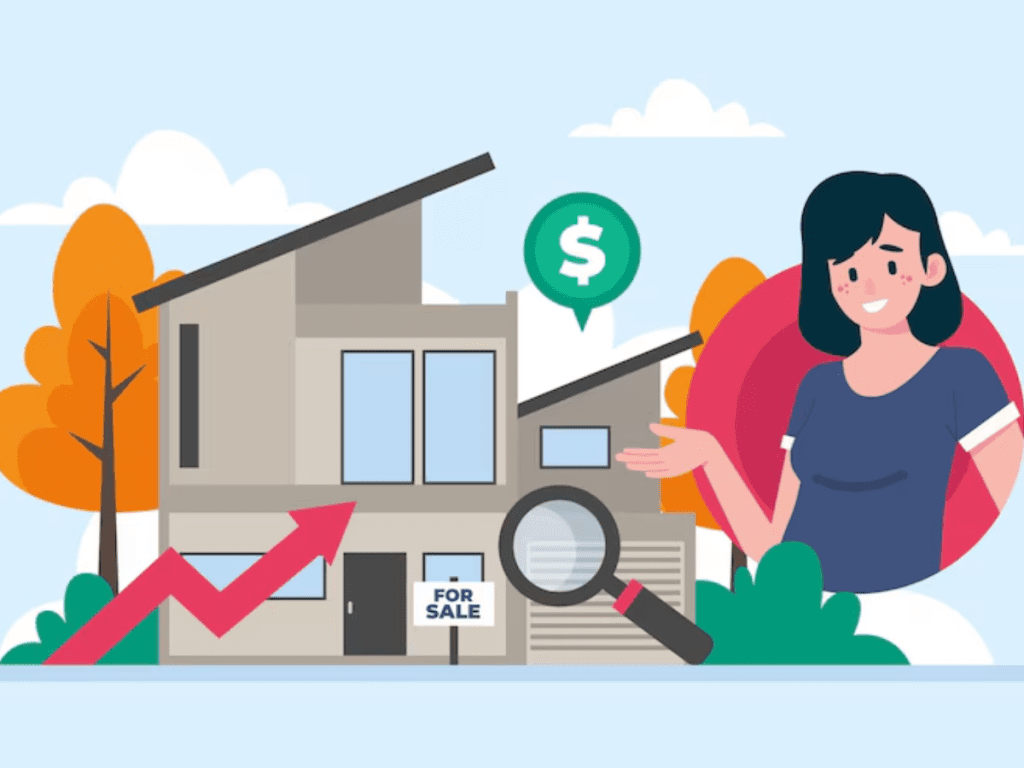Introduction
Purchasing a home is usually seen as a big milestone in a person’s life. But for most individuals, particularly first-time homebuyers, this dream can seem extremely distant as a result of the complexity of the process and the tremendous financial investment involved. Luckily enough, there are several programs, grants, and down payment assistance programs designed to help relieve the strain for first-time buyers. These tools, presented both by the government and private institutions, can significantly make homeownership more attainable. In this in-depth guide, we will discuss the various loan programs, grants, and down payment assistance first-time homebuyers can benefit from in 2025.
Understanding the Significance of First-Time Homebuyer Programs
First-time homebuyer schemes exist to lower the financial hurdle that keeps many people out of the housing market. These schemes usually provide lower interest rates, lower down payments, and less strict eligibility requirements than traditional home loans. By making home buying easier for individuals, these schemes encourage economic stability and homeownership in communities nationwide.
What Constitutes a First-Time Homebuyer?
In order to qualify for most first-time homebuyer programs, you have to be considered a first-time homebuyer according to the general definition. Typically, that will mean you haven’t owned a home within the last three years. Occasionally, the definition can include those who have previously owned a home but are buying a home again in another area or under new circumstances. Certain programs will also take into account those who are buying homes in certain neighborhoods that are identified as underserved or economically disadvantaged.
Federal Housing Administration (FHA) Loans for First-Time Buyers
The Federal Housing Administration (FHA) loan is perhaps one of the most popular options among first-time buyers. Government-backed FHA loans were created to increase access to mortgage credit for potential homeowners who lack good credit ratings and large down payments. Due to their advantages, the FHA loan program proves to be particularly attractive for first-time home buyers since borrowers may make down payments as low as 3.5 percent of the property cost.
Moreover, FHA loans generally have less stringent credit score requirements. While conventional loans usually require a credit score of 620 or higher, an FHA loan can be granted to a borrower with a credit score as low as 580. For borrowers who have a credit score ranging from 500 to 579, the down payment requirement is increased to 10 percent. FHA loans also work well for those with a short financial history or who have possibly had past financial issues.
Despite that, there are a few drawbacks to FHA loans. The biggest one is that they require the payment of mortgage insurance. Although the cost of upfront mortgage insurance is comparatively low, it is an added fee that is paid on top of the loan over time. The purpose of this insurance is to cover the lender if the borrower fails on the loan, but it adds to monthly payments for consumers.
Veterans Affairs (VA) Loans for Qualified Purchasers
The U.S. Department of Veterans Affairs (VA) loan program can benefit active duty members of the military, their families, and veterans. VA loans have numerous benefits compared to other types of loans, and for this reason, they are in great demand by those who are qualified. One of the most notable advantages of a VA loan is that no down payment is required. This is a tremendous benefit for most homebuyers, particularly those who have not saved much for a down payment.
Apart from the no-down-payment advantage, VA loans are normally lower in terms of interest rate and also lack private mortgage insurance (PMI). PMI is usually paid by homebuyers who deposit less than 20 percent of the cost of the home they purchase, but recipients of VA loans are not required to pay PMI. Consequently, VA loans are likely to save on the overall home-purchase cost.
To be eligible for a VA loan, one has to fulfill some requirements for service, such as having served a certain period of time in the military or being the spouse of a service member who passed away while on active duty. It’s worth mentioning that though VA loans come for first-time homebuyers, they are not restricted to first-time homebuyers and can be utilized several times.
U.S. Department of Agriculture (USDA) Loans for Rural Homebuyers
If you want to buy a home in the countryside, the U.S. Department of Agriculture (USDA) loan program may be just what you’re looking for. USDA loans are actually created to promote homeownership in rural and suburban communities by providing good loan terms and no or low down payments. This makes the USDA loans very appealing to the first-time buyers who might have little savings in hand but would be willing to relocate to the rural or rural areas.
USDA loans can be obtained by homebuyers who qualify based on income levels and are buying a home in a qualified rural area. The USDA guarantees these loans, which decreases the lender’s risk and enables them to provide more favorable terms. Similar to VA loans, USDA loans do not have a down payment requirement, which makes them a great option for those who cannot afford a significant up-front payment.
To be eligible for a USDA loan, you will need to meet income and location criteria. Your family income must be within some limits based on the size of your household and the median income for your locality. The home you buy also needs to be in a USDA-approved rural area, which can be determined with the USDA’s online eligibility tool.
Conventional Loans with Low Down Payment Options
Even though traditional loans normally come with larger down payments, most lenders nowadays have options where one can pay a smaller down payment. Low down payment programs can be utilized by first-time homebuyers to lower the amount of cash needed to obtain a loan.
One such program is the HomeReady mortgage program by Fannie Mae, which provides a low down payment of only 3 percent. This program is intended to assist low- to moderate-income borrowers in gaining access to homeownership. Likewise, Freddie Mac has a similar program known as Home Possible, which also provides for a down payment as low as 3 percent for first-time homebuyers.
Both of these traditional loan programs offer flexible qualification requirements and are best for first-time buyers who do not have a significant amount of money available for a down payment but do qualify under the other requirements. That being said, conventional loans usually need a higher credit score than FHA or USDA loans, so applicants should make sure that their credit is in good standing before they apply.
The Role of Down Payment Assistance Programs
For most first-time homebuyers, saving sufficient money for a down payment is one of the greatest challenges to buying a home. Fortunately, there are several down payment assistance (DPA) programs that can reduce the burden. These programs are provided by different organizations, including state and local governments, non-profit agencies, and even employers.
Down payment assistance programs exist in a variety of forms, such as grants, forgivable loans, and low-interest loans. Grants are usually the best option, as they are not repayable, whereas forgivable loans are loans that are forgiven after a specified time, as long as the borrower stays in the house for the specified time. Low-interest loans are another form that can be used to minimize the initial costs of buying a home.
State and local government programs usually have particular eligibility requirements, such as income levels and first-time homebuyer status. In other instances, aid is provided only for buyers who are buying homes in certain areas or neighborhoods that are deemed underserved or economically distressed. To qualify for these programs, you might need to apply through a local housing agency or lender.
Employer-Based Down Payment Assistance Programs
Aside from government-sponsored initiatives, there are some employers who include down payment assistance as part of their employee benefits. These employer programs can grant or lend money to employees buying their first home, easing the cost of the down payment.
To determine whether your employer provides down payment assistance, contact your human resources department. Some employers have agreements with non-profit organizations or housing agencies to offer down payment assistance, so it’s worth inquiring about any available programs that might be offered.
Homebuyer Grants and Programs
Besides down payment assistance, most organizations provide homebuyer grants to subsidize the cost of buying a home. The grants are usually given to people who qualify based on certain criteria, such as income levels or military status. The money may be used to pay for the down payment, closing fees, or any other cost related to homeownership.
One of the better-known sources of homebuyer assistance grants is the U.S. Department of Housing and Urban Development (HUD), which runs a range of programs through state and local governments. HUD programs aim to assist low- and moderate-income families to become homeowners, and the funds do not need to be paid back.
Some non-profit organizations also provide homebuyer grants, which are usually designed for specific groups like minorities, first responders, or low-income families. These grants are less popular but can be a useful source of money for those who are eligible.
How to Qualify for First-Time Homebuyer Assistance
To become eligible for some of the first-time homebuyer programs, you will need to meet some qualifying requirements. The requirements usually include being a first-time homebuyer, having an established income, and having particular credit score or debt-to-income ratio requirements. Some programs will also ask that you take a homebuyer education course, which is valuable in learning about the homebuying process and being a homeowner.
Income qualifications differ by program and area, so it’s a good idea to check the individual requirements for the programs offered in your community. If you qualify for any of these programs, you can substantially lower the costs and hassles of buying a home.
Conclusion
Purchasing a home is something that many people want to do, and for first-time homebuyers, it can feel like an unattainable dream. But with the assistance of numerous loan programs, grants, and down payment assistance programs, it’s more accessible than ever to become a homeowner. Through examining the various resources open to you, such as FHA loans, VA loans, USDA loans, and local down payment assistance programs, you can discover the perfect solution for your economic circumstance. With proper planning and the proper support, 2025 can be the year you are a homeowner.

